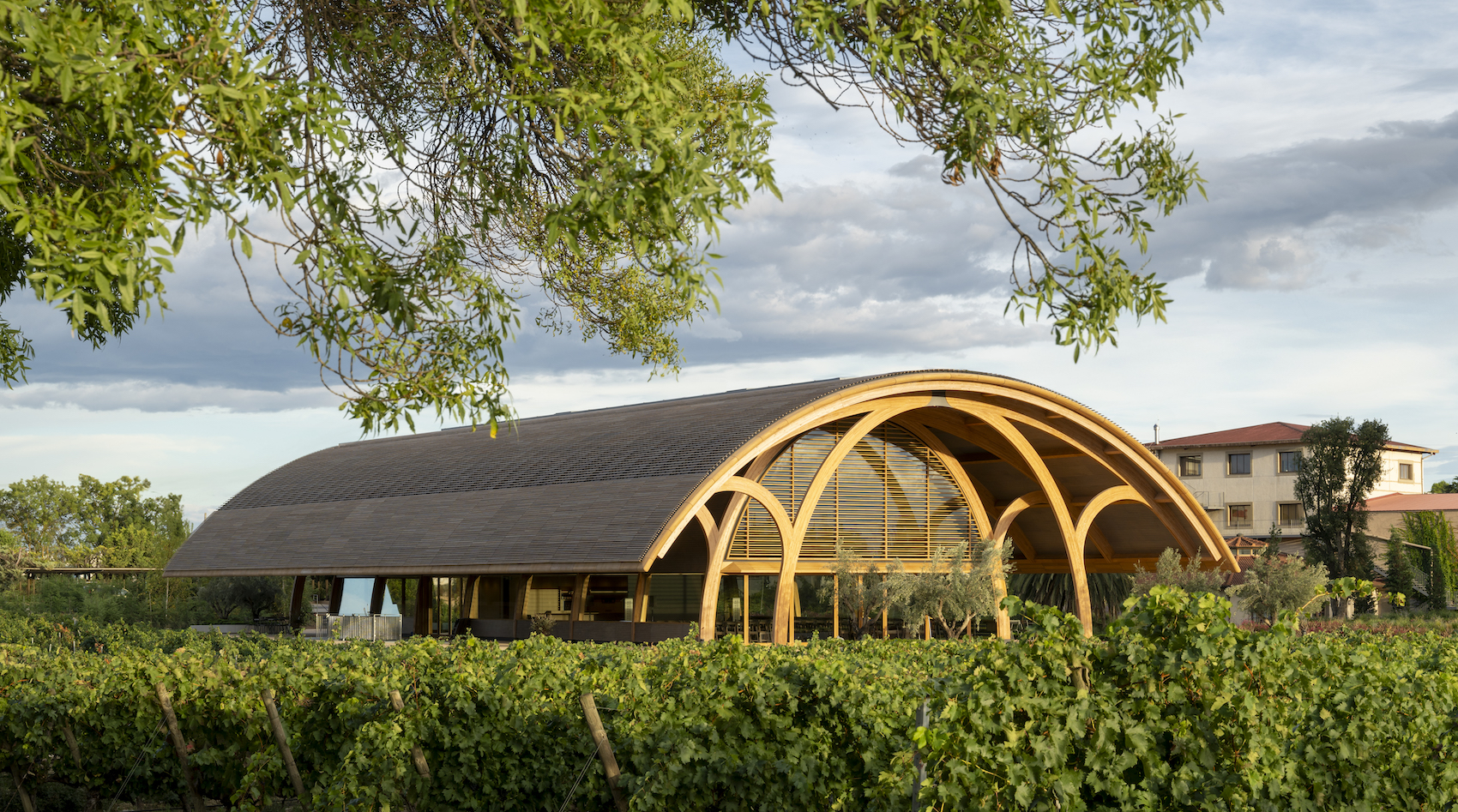Foster + Partners’ visitor centre at the Bodegas Faustino Winery in Oyón, Spain, is the latest project in a two decade relationship between architect and client.
Photos
Nigel Young, Foster + Partners
Foster + Partners has completed a visitor centre at the Bodegas Faustino Winery in Oyón, at the heart of Spain’s principal wine making region. The new building creates a stronger connection between the existing cellars and the surrounding vineyard. The main entrance has been relocated to the north of the site to create a new visitor experience making the vineyard the first thing visitors encounter on their tour. A gentle path leads to the new visitor centre, a flexible space designed as a vaulted, column-free hall. The vaulted roof is inspired by the industrial heritage of the winery, reinterpreted as a lightweight timber structure. The anti-funicular profile enhances structural performance with minimal materials, while its earthy colour palette allows the building to blend seamlessly with the landscape. An asymmetrical core connects with the mezzanine above, while creating two distinctive zones at the lower level, each with a different character. The upper level overlooks the entire visitor centre and the vineyard beyond.
Natural building materials enhance wellbeing for visitors and employees.
Designated a ‘Planet 1.0’ building – the visitor centre’s carbon emissions can easily be absorbed by the Earth’s green cover. It adopts an Energy Plus strategy led by the photovoltaic panels on the roof that produce more energy than required for building operations. The excess energy is diverted to the existing winery buildings. Large overhangs on all four sides reduce heat gain from the sun while blurring the boundaries between inside and outside. A central skylight and carefully integrated glazed facades bring natural light into interior spaces, reducing the need for artificial lighting. Natural building materials contribute to a biophilic environment and enhance wellbeing for visitors and employees. The new landscape features local species that enhance biodiversity and a discreet change in topography designed to protect the winery from the increasingly frequent heavy rainfall.
The vaulted roof is inspired by the industrial heritage of the winery, reinterpreted as a lightweight structure made from timber arches.
The new landscape blends with the site’s existing facilities which have been reorganised to improve operational efficiency. Underutilised structures have been removed to provide flexibility for future growth in line with client’s desire to incorporate new technologies into the winemaking process. Greenery has been added on to the facades of the existing buildings to provide natural protection from the summer sun, further reducing energy consumption across the site.
The unique Library Collection, the largest in the world focused on the afterlife of antiquity and the survival and transmission of culture, is housed over four stories preserving Aby Warburg’s original system of organisation with one floor each devoted to subjects of Image, Word, Orientation and Action. A reconfiguration to the layout of the shelving has expanded stack areas to make space for new acquisitions to the growing collection of 360,000 volumes, and it has opened up the library to natural light.
Other enhancements throughout the building incorporate the refurbishment of the reception area, in which the newly restored Coade stone frieze of the nine muses of the arts and sciences is installed to welcome visitors upon entry.
The building adopts an Energy Plus strategy led by photovoltaic panels on the roof, that produce more energy than required for building operations.
Commissioned by the fourth generation of the Martínez Zabala Family, the project is part on a long-standing relationship between architect and client. Norman Foster said: “Our valued relationship with the Martínez Zabala Family stretches back to the last two decades, when we first worked together on their Bodegas Portia in 2010. The new project in Oyón knits together the entire site with discreet, sustainable interventions to the existing buildings and landscape, and an entirely new visitor centre that provides a new social focus and image for the winery with an immersive experience for all.”
Source: Architecture Today









